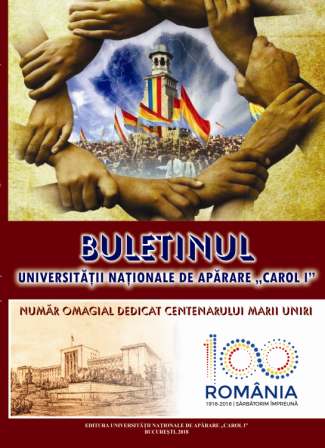
We kindly inform you that, as long as the subject affiliation of our 300.000+ articles is in progress, you might get unsufficient or no results on your third level or second level search. In this case, please broaden your search criteria.


Eschatologic theories have constantly preoccupied humanity, most often in a mystical sense. Recently, some of these theories have been noted for gaining (at least partially) scientific approval. Sometimes, more (or all) eschatological theories are considered to be in close connection to each other, thus constituting components of a more complex and unifying theory: The Societal Collapse Theory (or The End of Civilization Theory). The dystopian science-fiction, the apocalyptic science-fiction and the post-apocalyptic science-fiction are literary reflections (proving sometimes to be even anticipations) of the aforementioned theory/theories. When it does not directly or indirectly influence scientific ideas, science-fiction literature contributes to the popularization of these theories and to the general awareness of their implications. Our goal is to highlight here some literary science-fiction works: remarkable examples of Societal Collapse/End of Civilization Theory in literature.
More...
The study shows how the small village of Riace, in Calabria, has developed an atypical model for the reception of migrants, which has now proved to be economically and socially efficient, but also,surprisingly enough, sound from a cultural identity point of view. Riace provides evidence that an intelligent reception, carried out with dignity,can exist and be profitable for both parties: migrants and local people.
More...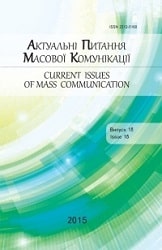
In this study, a scientific interpretation of escape and entertainment TV viewing motives is considered in the view of Uses and Gratifications Theory. More specifically, it is analysed how the TV viewing motives, initially elaborated for general TV use, are important to the TV news consumption. How strong are the motivations to escape and seek for entertainment in TV newscasts? Given that primary goal of TV news viewing is obtaining information about the society and the world, TV news largely perform the instrumental role. However, in digital era, TV news are a combination of hard news (serious newsworthy topics, with analytical approach) and soft news (entertaining news items that rely mainly on attracting viewers' attention, and relief after watching hard news). After TV viewers return home, there is usually no matter what to watch, but it is important just to relax. Though the amount of soft news is relatively small, it was studied how strong viewers' motive is to watch an average TV newscast as a means to escape or being entertained. Our study indicates that TV news has to be considered within two motivational patterns elaborated by U&G scholars for general TV use: instrumental and ritualistic viewing. Escape and entertainment motives are indisputable attributes of ritualistic use, whereas informational or surveillance motive leads to instrumental use. Within Uses and Gratifications Theory, the concepts of escapism and entertainment occupy central positions in the row of TV viewing motives. However, they are often considered as a motivation to watch entertainment TV – fictional or reality-based programmes. But specific motivational structure that drives viewers to watch TV news remain largely meagre and divergent. In this study there was analysed the evidence that indicate various extents of strength of escapism and entertainment motives towards TV news viewing. Notwithstanding some criticisms, U&G proved to be an enduring scientific approach. In U&G research, watching TV news is regarded as a process, aimed at obtaining messages about the world and neighbourhood, as well as information necessary for everyday decision making by the viewer and her/his relatives. In recent decades, the infotainment genre or soft news has been becoming more popular, and more and more tabloid TV stations tend to consider that TV news should entertain the viewers not less than to inform, or even more.
More...
The web in recent years has gradually undergone a profound change. This rapid change that has taken place in recent years has affected the disruption of the Internet as an informal center and information dissemination structure by isolating the user into personalized and centralized information. The launch of the World Wide Web began to look like the biggest threat to television, because the network of those days did not look like television, so it was text-based, decentralized, interactive, and diversified. Though he did not annihilate traditional television, he stopped his rapid growth for nearly two decades. Social media platforms changed this reality. With the spread of smart phones since the beginning of 2010, social media began to dominate the time people spent on the Internet. While the internet started imitating the book and for a time was dominated by text, it was an online book, with the development of digital cameras and photos, videos and driving images that made the Internet transform from Internet-book to Internet – television. This paper deals with the role of social networks in transforming the text-based web to-visual-based web. The paper also discusses how social networks have influenced centralization of information, creation of different groups, profiling of readers.
More...
The goal of this paper is to examine the relationship between the unidimensional left-right measure of ideology and more nuanced measures of major political ideologies as well as to ascertain the validity of the left-right measure of ideology as a conceptual tool for analysing ideological preferences within the Croatian context. This was accomplished by deploying an online questionnaire on a convenient, non-representative sample of students from the University of Zagreb, Croatia. The students were recruited via various social media student groups. The paper starts by theoretically exploring the six major ideologies from which it develops a pool of items for measuring said ideologies. The data acquired via the aforementioned questionnaires was then analysed with the goal of assessing the best items to measure each ideology. The paper goes on to assess the relationship between the respondents’ support of major ideologies and their self-positioning on the left-right ideology scale. The acquired results demonstrate that the respondents possess a general understanding of the ideological left-to-right scale and are coherent in their preferences with the values of their ideology of choice. They further demonstrate that the correlations between the participants’ self-positioning on the left-right continuum and level of support for particular ideologies follow the expected direction. Therefore, while taking the limits of the deployed sample type into account, the paper reaffirms the validity of the left-right measure of ideology as a conceptual tool for analysing ideological preferences within the Croatian context.
More...
‘Disobedient Democracy: A Comparative Analysis of Contentious Politics in the European Semi-periphery’ is a research project implemented by the Faculty of Political Science of the University of Zagreb, in the period 2016-2021, led by Principal Investigator Danijela Dolenec and funded by the Swiss National Science Foundation (IZ11Z0_166540 – PROMYS). The overall objective of the project is to explore how protest politics advances democracy by collecting and analyzing data on protest mobilizations in four countries: Portugal, Spain, Croatia and Serbia. [...]
More...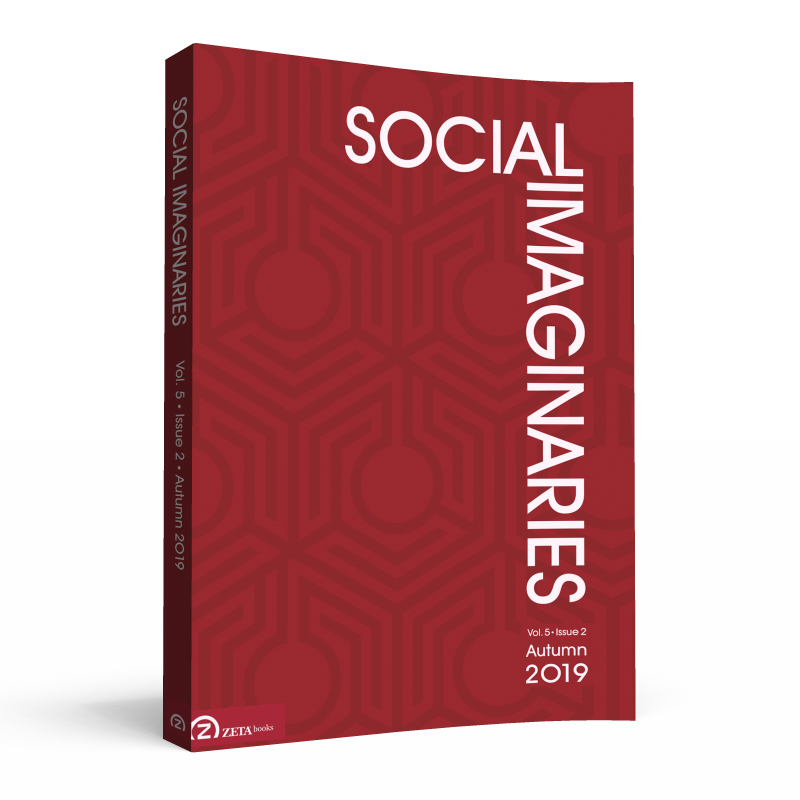
Western jihadism is a complex phenomenon in which the imaginary dimension, the subjectivity of the actors linked to their socio-economic condition but also to their ethnicity, and beyond that, what I call their subjectivation (the ability to empower oneself as a social actor), play a significant role. In Europe, among the Muslim offshoots of migrant workers, most of the psycho- logical developments associated with Jihadism occurs in very specific urban structures, the poor districts or suburbs, where a high concentration of urban poor live with a burden of social stigma linked to the high criminality rate. These settings are often de facto ghettoes. The development of a specific urban imagination often gives meaning to the jihadist commitment among young people living in this type of settlement. This imaginary often feeds on a feeling of stigmatization among these people. Jihadism is not a quest for meaning, but its discovery, the wielding of it through embracing death and inflicting it on the ‘infidels’. It is, in another way, a punishment of society, an act of vengeance against it, be it due to personal reasons (mainly for the young downtrodden of the immigrant origin who feel stigmatized by the society) or due to the lack of ideal, utopia and social justice in society (the case of the young middle class people). This study aims at underlining the fact that social imaginaries should be at the root of socio-anthropological analysis and without understanding the meaning of social action, quantitative views give us at best a unilateral, at most a distorted view of social action and social behavior.
More...
The review of: 1) Information Wars: How We Lost the Global Battle against Disinformation and What We Can Do About It. Richard Stengel. London: Grove Press, 2020. 2) Beyond Post-Communication: Challenging Disinformation, Deception and Manipulation. Jim Macnamara. New York: Peter Lang, 2020. 3) The Disinformation Age: Politics, Technology and Disruptive Communications in the United States. W. Lance Bennet and Steven Livingston. Cambridge: Cambridge University Press, 2020.
More...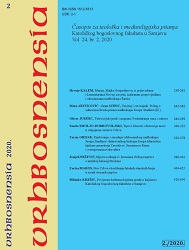
The phenomenon of migration and the experience of migrants is impossible to summarize even when we go into specifics. Diverse sociological, religious, and political approaches have produced a large volume of literature and research. This article is a modest attempt at partial understanding and maintains a limited scope. Research on language is to some extent rendered impossible, as it posits an understanding of language as a complete experience of communication. Hence, the term language is limited here to the definition of television language formulated by Neil Postman. We leave aside the language of media as a generic term for all the actual means of communication, which goes beyond the language of television. The term ‘migrant’ also does not include sociological, religious, political and anthropological interpretation but is limited to the fields of news and entertainment. Even the terms of news and entertainment are understood in the sense defined by art theorist Boris Groys and philosopher Gilles Lipovetsky. Hence the scope and purpose of the present article is not a comprehensive attempt at some sort of final interpretation of the reality of the migrant experience through a hermenautical approach. Rather, the article is a synthesis of views by three authors in a narrow context limited by the terms ‘the language of television’, ‘news’ and ‘entertainment’, so that discussion of the migrant phenomenon can be continued and developed into new and different views and interpretations.
More...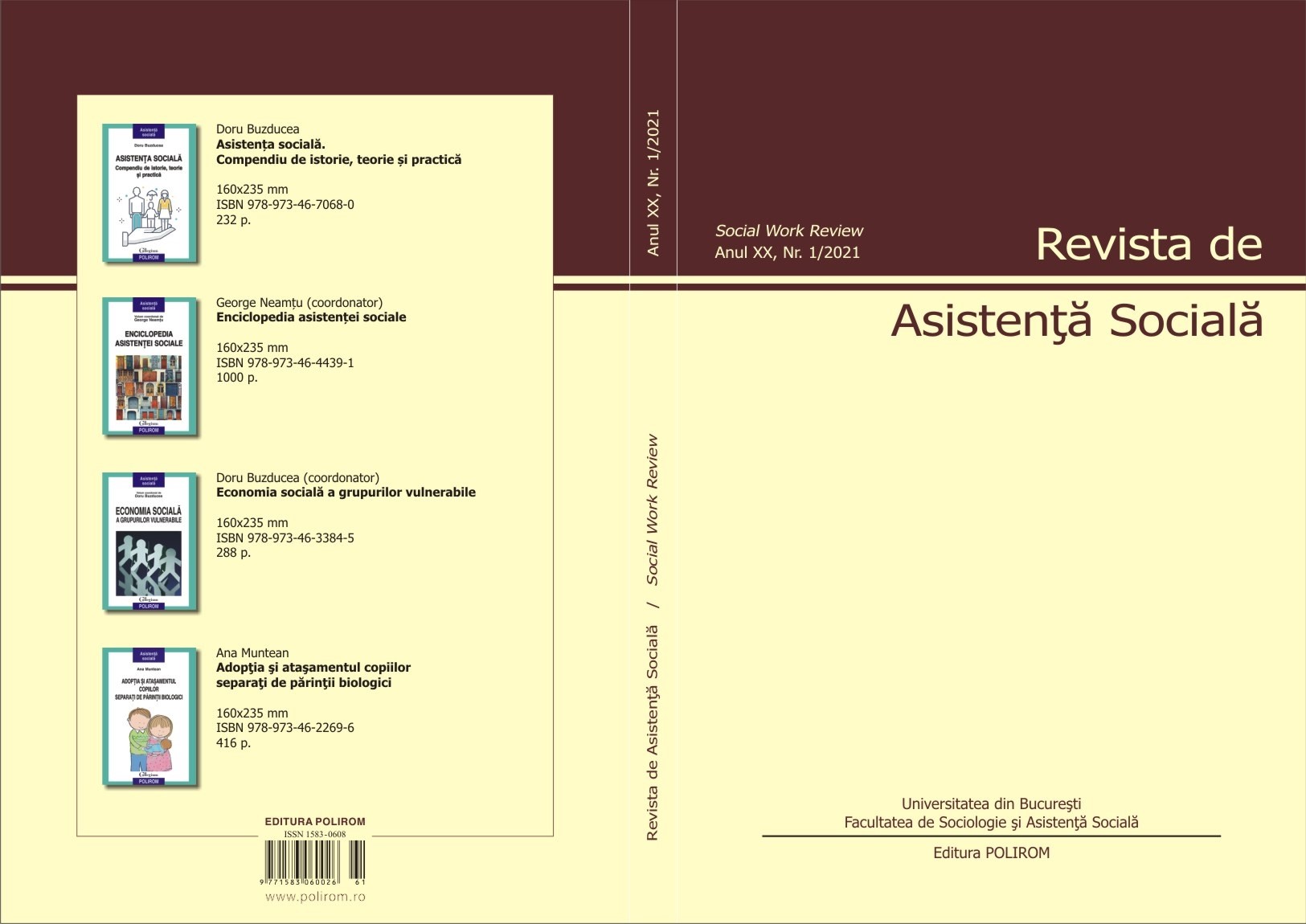
Together with the Coronavirus pandemic, a pandemic of information also emerged. The fast development of technology and the diversification of communication channels, also made social media a favorable environment for the spread of fake news. Even though many platforms started integrating tools to help people identify false information, today is still challenging to combat and recognize the varied forms of fake news. Even more, in times of crisis, being able to distinguish between false and true information becomes very important, especially in the cases of vulnerable groups that are more prone to believing and sharing false information. The purpose of our paper is to analyze the types of fake news shared on the Facebook pages of Romanian TV channels during the pandemic, in order to create a typology of false information and facilitate the recognition of such news. Using content analysis as a research method we analyzed the posts of 5 TV channels in Romania, for a period of one month. Their posts were analyzed according to seven types of fake news: satire/parody, misleading content, imposter content, fabricated content, false connections, false context, and manipulated content. Our findings revealed that most posts contained misleading content which took the form of clickbait, and that the channels din not have fabricated or imposter content. Therefore, while describing both the false information posted on Facebook and the real news, our paper presents a typology of fake news, and provides information on how people could identify social media fake news more easily.
More...
The SARS CoV-2 coronavirus gave rise to the 2020 pandemic, a context in which people took more intense measures of physical distancing when they perceived a higher risk of getting ill. The present study aims to reveal some aspects of mental health, as anxiety and depression, but also the connection between social perception of the danger of getting infected and the measures of physical distancing taken by people in the pandemic context, among adult Romanian population.
More...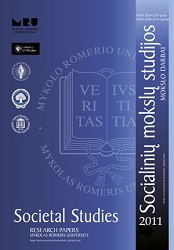
The article reviews Item Response Theory facilities in modeling social phenomena, its advantages and disadvantages comparing with Classical Test Theory and mathematical statistics methods. It discusses the application of IRT in social sciences specifics. The extension of Item Response Theory model where item characteristic functions have been approximated not only with logistic functions, but also with functions from other wide classes of parametric functions is presented. The procedure of item calibration—choosing of the best fitting item characteristic function and parameter’s estimation—is described in the paper. When choosing the item characteristic function for the model from wider class of functions as the result we obtain better agreement between observed data and the formal model. The example of IRT application in measuring the Environmental Performance Index is examined. The technology of extending the class of logistic functions used for simulation was applied in this case study. Calculated test information function’s values for the proposed mixed model were higher comparing with corresponding values for 2 parameters logistic model. The clusterization procedure performed by EPI values calculated as the total score of 9 items test was accomplished. Kendall‘s τ and Spearman’s ρ rank correlation coefficients for measuring the relation between estimations of EPI accomplished by the total test score value and the EPI value calculated as the weighted sum of 25 indicators are presented for different values of test items n. It was shown that the new methodology allows to perform rather precise norms-referenced evaluation of objects with respect to latent feature which couldn’t be measured directly with a significantly less amount information. The proposed methodology could be used in various areas of human activities where the actual problem is norms-referenced evaluation.
More...
I’m writing this essay several weeks before the American presidential election and I am told that it will only appear in print some days afterwards – when most likely there will not be a solid verdict about the winner, or even if there is one, it will only serve as the cue for hordes of lawyers to start fighting in the courts. Unlike a lot of political observers, I think that, in the long run, the outcome of the 2020 election is not as important as the fact that for the last four years a bright light has been shone in the dark corners of American politics and the problems revealed cannot be easily remedied. If nothing else, Donald Trump’s term in office has been a grotesque test of the durability of the American system; and what we have learned, if we didn’t know it already, is that there are long-standing weaknesses in the American Constitution as well as troubling aspects of our national history and characterological flaws in the American psyche.
More...
The ongoing Belarusian protests in addition to its obvious political aims, also solves a much more important issue. The public is abandoning the national template of self-determination as a civil order. For Belarusians in 2020, so many things have changed. For the first time in more than a quarter century, the authorities in Minsk felt a real danger to their existence and lost control over public opinion. Alyaksandr Lukashenka’s autocracy has completely exhausted itself of moral and ideological resources. This was caused by the outbreak of protests in 2020, which has a much deeper meaning. Lawlessness and violence from the authorities was a desperate reaction to the devaluation of their ideological values and the anachronistic narrative of state social care and order.
More...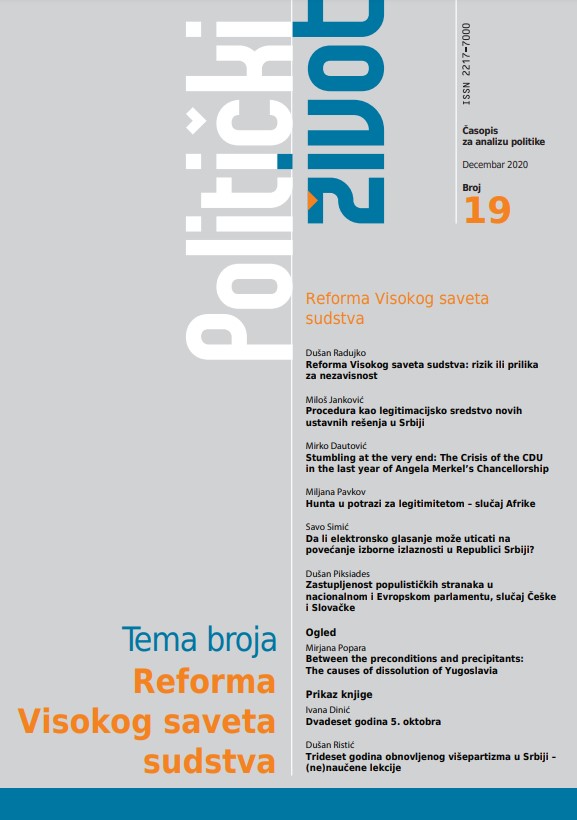
In this paper, the author explores the elections organized by the juntas after the military coups in Africa, trying to find a connection between the personal ambitions of military personnel to come to power and the supposedly democratic elections. The paper contains a theoretical definition of a coup d’etat as a form of political coup, as well as a definition of the terms coup and junta. Through the examples of the Central African Republic, Mauritania and Guinea Bissau, the author shows the practice of organizing elections by the junta in the 21st century and their motives. In addition, the paper examines the possibility of military regimes to make a democratic transition and put an end to authoritarian regimes in Africa.
More...
The article is of the theoretical and empirical character. In the first part, the definitions, types, components and the process of shaping the image of cultural institutions are discussed. The second part presents research hypotheses, methodology, results, conclusions and the implications for management. The results of the research presented in the article prove that the online activity of social media users stimulates the image of cultural institutions. Statistically significant relationships were observed for the components of the image related to awareness/associations of cultural institution and for the relationship related to the perception of quality its offer.
More...
Public transport in Warsaw is currently showing a dynamic development. The capital of Poland, as the largest city in the country, is constantly increasing spending on transport and implementing large investment projects, such as the expansion of the subway, which gives residents more opportunities for efficient movement within the agglomeration. Despite the implementation of these investments, there are still some sensitive places in Warsaw where access to public transport may be difficult. Given these conditions, a study of public transportation accessibility is warranted and socially needed. This article presents the results of a questionnaire survey conducted among Warsaw residents. The study included a group of 986 respondents, most people between the ages of 18 and 44. The analysis conducted looked at perceived accessibility of public transportation and satisfaction with public transportation services. As a result of the study, we could identify the main factors that influence passenger satisfaction, as well as examine transport accessibility in the social city of Warsaw. Conclusions from the study may be helpful for the city government to improve the functioning of public transport.
More...
Ko god da se brzopleto zaputi u virtualnu džunglu, grlom u jagode, naivno vjerujući da probirljivo prilazi švedskom stolu, preuzima rizik da se lijepo provede kao Amerikanka Justine Sacco, bivša PR-ica Inter Active Corp., koja je prije svog leta u Afriku nepromišljeno tvitala sljedeću neukusnu poruku: "Going to Africa. Hope I don't get AIDS. Just kidding. I'm white!". Put je prespavala kao nedužna bebica no kad je sletjela uslijedio je šok. U međuvremenu Internet je eruptirao, lava otrovnih komentara živu je sahranjivala, da stvar bude gora, dočekao je još i otkaz s posla.
More...